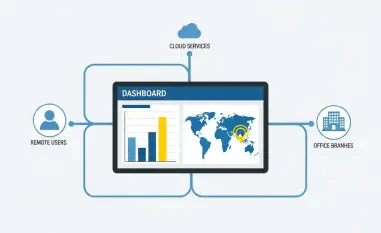I’m thrilled to sit down with Malik Haidar, a renowned cybersecurity expert with a wealth of experience in safeguarding multinational corporations against digital threats and hackers. With a deep background in analytics, intelligence, and security, Malik has a unique ability to blend business perspectives with cutting-edge cybersecurity strategies. Today, we’re diving into the world of Physical Access Control Systems (PACS) and the critical role of modern standards like the Open Supervised Device Protocol (OSDP). Our conversation will explore how these systems protect organizations, the risks of outdated technologies, and why embracing open standards is essential for the future of security.
How do Physical Access Control Systems (PACS) contribute to organizational security, and why are they so vital in today’s environment?
PACS are essentially the gatekeepers of physical security for organizations. They manage who can enter or exit a building or specific areas within it, using tools like key cards, badges, or biometric scans. Their importance today stems from the growing need to protect not just digital assets but also physical spaces, especially as workplaces become more connected. With the rise of hybrid work environments and networked devices, a breach in physical security can easily lead to digital vulnerabilities. PACS help mitigate risks by ensuring only authorized individuals gain access, safeguarding sensitive areas and data from potential threats.
What can you tell us about the evolution of PACS over the years, particularly with advancements in technology?
Over the decades, PACS have transformed significantly. Early systems were basic, often relying on simple locks or punch-card mechanisms with little to no integration. As technology advanced, we saw the introduction of electronic card readers and protocols like Wiegand in the 1980s, which brought some standardization. Now, with IoT and cloud computing, modern PACS are highly sophisticated, offering real-time monitoring, integration with other security systems like video surveillance, and even mobile access credentials. This evolution reflects the need to keep up with increasingly complex threats and the demand for seamless, user-friendly solutions.
Let’s talk about the Wiegand protocol, which many PACS still use. Can you explain what it is and why it became so popular?
The Wiegand protocol is a communication standard developed in the 1980s for card readers and access control systems. It became widely adopted because it was one of the first reliable ways to transmit data between a card reader and a controller, using a simple wiring setup. Its popularity grew due to its compatibility across many systems at the time and the lack of competing standards. It essentially became the default choice for decades because it was cost-effective and straightforward to implement, especially when security threats were less sophisticated than they are today.
What are some of the security challenges organizations face by continuing to use the Wiegand protocol in modern times?
The biggest issue with Wiegand is that it wasn’t designed for today’s threat landscape. It lacks encryption, meaning data transmitted between a reader and controller can be easily intercepted using basic hacking tools. This makes it vulnerable to attacks like skimming or cloning credentials. Additionally, it’s a one-way communication protocol, so there’s no way for the system to verify or respond to potential tampering in real time. For organizations, this can lead to unauthorized access, data breaches, and significant financial or reputational damage if exploited.
Despite known risks with Wiegand, many organizations still rely on it. What do you think are the main barriers preventing a shift to newer technologies?
A major barrier is cost. Upgrading to modern systems often means replacing hardware, rewiring infrastructure, and retraining staff, which can be a huge investment, especially for large organizations with sprawling facilities. There’s also a comfort factor—many companies stick with what’s familiar, even if it’s outdated, because change feels risky or disruptive. Additionally, some may underestimate the likelihood of being targeted, thinking their current setup is “good enough.” This inertia, combined with budget constraints, often delays the transition to more secure solutions.
Can you break down what the Open Supervised Device Protocol (OSDP) is and why it was created as an alternative to older standards?
OSDP is a modern communication protocol for access control systems, developed to address the limitations of older standards like Wiegand. It was created to provide a secure, standardized way for devices like card readers and controllers to interact, even if they’re from different manufacturers. Its purpose was to enhance security through features like encryption and to support the growing need for interoperability in a world where security systems must integrate with other technologies. OSDP ensures that as threats evolve, organizations have a framework that can adapt and protect data more effectively.
How does OSDP enhance security compared to older protocols, and why is its open standard nature beneficial for organizations?
OSDP significantly boosts security by using AES-128 encryption, which scrambles data during transmission, making it nearly impossible for hackers to intercept or manipulate without the proper key. Unlike older protocols, it also supports two-way communication, allowing devices to authenticate each other and detect tampering. Its open standard nature means it’s not tied to a single vendor, so organizations can mix and match compatible hardware and software from various providers. This flexibility reduces costs over time, prevents vendor lock-in, and allows for easier upgrades as new technologies emerge.
OSDP’s two-way communication is often highlighted as a game-changer. Can you explain how this feature improves access control systems with a practical example?
Two-way communication means the reader and controller can exchange information in real time, rather than just sending data one way. This allows for immediate feedback and verification. For instance, imagine a high-security facility where someone swipes a card. With OSDP, the controller can instantly check if the credential is valid, notify the reader if there’s an issue, and even trigger an alert if tampering is detected. This responsiveness can prevent unauthorized access on the spot, unlike older systems where a breach might only be noticed after the fact during a manual review.
What’s your forecast for the future of Physical Access Control Systems, especially regarding the adoption of standards like OSDP?
I believe we’re heading toward a future where open standards like OSDP become the norm, driven by the increasing complexity of cyber-physical threats and the need for seamless integration across security platforms. As organizations recognize the risks of legacy systems, especially with rising regulatory pressures and high-profile breaches, adoption will accelerate. I expect to see OSDP and similar standards evolve further, incorporating AI and IoT capabilities to predict and respond to threats proactively. Within the next decade, clinging to outdated protocols will likely be seen as a critical liability, pushing even the most hesitant organizations to modernize.













